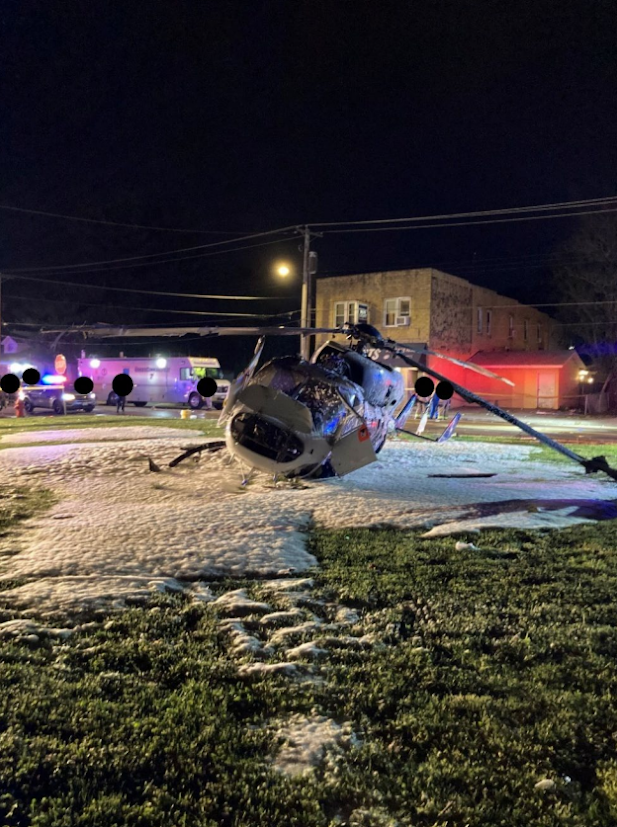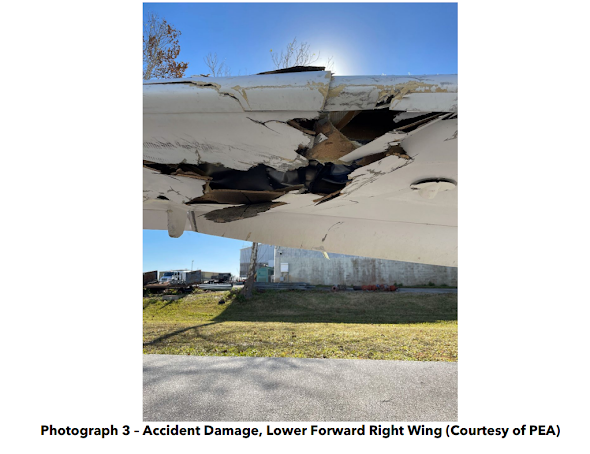- Location: Hartford, Illinois
- Accident Number: CEN25LA163
- Date & Time: April 24, 2025, 20:51 Local
- Registration: N880SL
- Aircraft: MESSERSCHMITT-BOLKOWBLOHM BK 117
- Aircraft Damage: Substantial
- Defining Event: Collision during takeoff/land
- Injuries: 3 Serious
- Flight Conducted Under: Part 135: Air taxi & commuter - Non-scheduled - Air Medical (Unspecified)
https://data.ntsb.gov/carol-repgen/api/Aviation/ReportMain/GenerateNewestReport/200063/pdf
https://data.ntsb.gov/Docket?ProjectID=200063
The purpose of the public relations flight with the air medical helicopter was to perform landing zone training with a fire department. Prior to the flight, the pilot discussed the confined area landing zone characteristics with another company pilot, and he studied satellite imagery of the confined area landing zone. The flight manifest and the flight risk assessment tool were completed and submitted to the operational control center, which then issued a flight release after approval. Prior to initiating the approach, the pilot performed a high reconnaissance to identify the confined area landing zone and the obstacles which consisted of a tree and power lines. The pilot then performed a low reconnaissance while simultaneously performing a steep approach. The helicopter landed in the vacant lot, consisting of a flat grass field, across the street from the fire department.
Several hours later after the training was completed, the pilot performed a ground reconnaissance, noting the tree and the power lines. Ground personnel illuminated the power lines near the confined area landing zone for the night takeoff. The pilot, who was utilizing night vision goggles with the helicopter’s searchlight activated, brought the helicopter to an in ground effect hover, and he balanced the torque indications for the two turboshaft engines. The pilot decided to use the power lines in front of the helicopter as a visual reference for the initial climb. During the initial climb, the helicopter inadvertently drifted rearward, and the tail rotor system impacted the tree. The helicopter rotated to the right, descended, and it came to rest partially upright. Shortly after impacting the ground, a postimpact fire initiated, and partially consumed the helicopter.
The front right seat pilot and the rear left seat (aft facing) flight nurse were able to egress on their own from the helicopter. The front left seat flight nurse required assistance from ground personnel to egress from the helicopter. The fire department was able to immediately perform fire suppression efforts on the helicopter. The helicopter sustained substantial damage to the fuselage, the main rotor system, the empennage, and the tail rotor system. The helicopter was not equipped with a crash resistant fuel system, nor was it required by regulation.
- Probable Cause: The pilot’s failure to maintain directional control during the initial climb at night from a confined area landing zone, that resulted in an impact with a tree, a loss of control, and a subsequent impact with terrain.





































